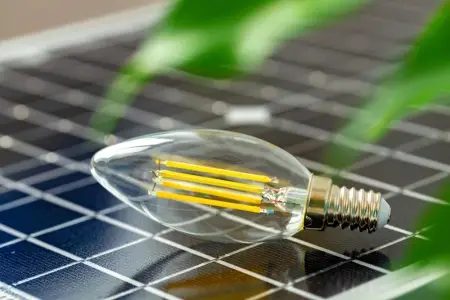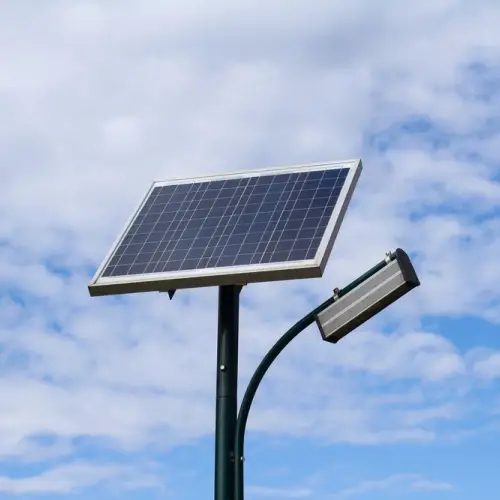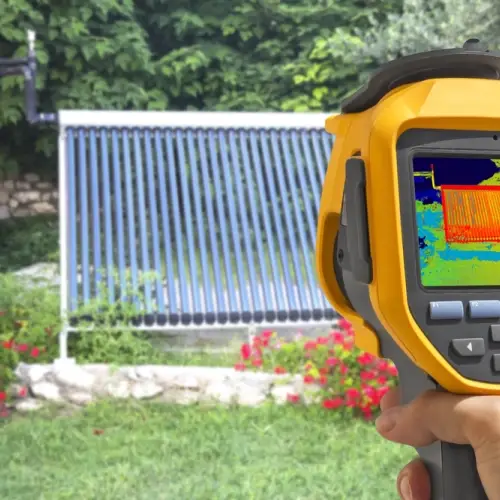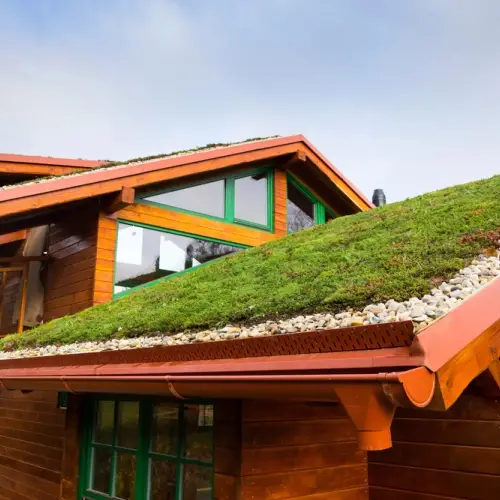
Solar energy is one of the most abundant and promising sources of renewable energy available today. It is obtained directly or indirectly from the Sun’s radiation, which reaches the Earth in the form of electromagnetic waves. Solar energy can be harnessed using a variety of technologies that convert sunlight into usable forms of power, such as electricity or heat.
This article explores the main types of solar energy technologies, their applications, benefits, limitations, and how they integrate with other energy sources in hybrid systems:
- Photovoltaic solar energy (PV)
- Thermal solar energy
- Concentrated solar power
- Passive solar energy
Photovoltaic solar energy
Photovoltaic (PV) systems convert sunlight directly into electricity using semiconductor materials (usually silicon) found in solar cells. These cells are grouped together in solar panels, which can be installed on rooftops, solar farms, and even on mobile systems.
- PV systems produce direct current (DC) electricity.
- Efficiency typically ranges from 15% to 22%.
- Widely used in residential, commercial, and utility-scale installations.
Applications
Rooftop Solar Panels for Homes
Photovoltaic solar panels are commonly installed on residential rooftops to generate electricity for household use.
These systems reduce dependence on the utility grid, lower electricity bills, and increase energy independence. In many countries, homeowners can benefit from financial incentives, such as tax credits or net metering programs, which allow them to feed excess energy back into the grid.
Rooftop systems are usually grid-connected but can be combined with battery storage for backup power during outages or at night.
Off-Grid Solar Systems in Remote Areas
Off-grid solar systems provide an essential energy solution in regions without access to centralized electricity. These systems typically consist of solar panels, batteries, charge controllers, and inverters, enabling them to operate independently of the grid. They are widely used in rural communities, remote research stations, off-grid cabins, and humanitarian aid settings.
Off-grid solar not only powers lights and appliances but can also support communication systems, water pumps, and medical equipment in underserved areas.
Solar-Powered Street Lighting
 Solar-powered street lights use photovoltaic panels to charge batteries during the day and power energy-efficient LED lamps at night.
Solar-powered street lights use photovoltaic panels to charge batteries during the day and power energy-efficient LED lamps at night.
These autonomous systems are ideal for public lighting in locations where grid extension is difficult or costly. They enhance safety, reduce electricity costs for municipalities, and contribute to lower carbon emissions. Some models include motion sensors or timers to further improve efficiency. Solar street lighting is increasingly adopted in both urban and rural development projects around the world.
Thermal solar energy
 Thermal solar energy, also known as solar thermal, involves capturing the sun’s heat to warm fluids such as water or air for domestic, commercial, or industrial use. Unlike photovoltaic systems that generate electricity, thermal systems focus on harnessing solar radiation as heat. This is achieved through devices called solar collectors, which include flat-plate collectors and evacuated tube collectors.
Thermal solar energy, also known as solar thermal, involves capturing the sun’s heat to warm fluids such as water or air for domestic, commercial, or industrial use. Unlike photovoltaic systems that generate electricity, thermal systems focus on harnessing solar radiation as heat. This is achieved through devices called solar collectors, which include flat-plate collectors and evacuated tube collectors.
These systems are particularly effective for low-temperature applications like residential water heating, pool heating, and space heating. They are cost-effective, relatively simple to install, and widely used in sunny regions around the world.
In addition to household applications, solar thermal energy is also used in high-temperature systems to generate electricity. These setups often involve concentrating solar collectors that heat a fluid to produce steam, which drives turbines in a process similar to conventional thermal power plants. Such concentrated solar thermal systems are commonly found in industrial or utility-scale operations, particularly in desert or arid climates where sunlight is abundant and consistent.
By integrating thermal storage, these systems can extend electricity generation into the evening hours, offering a renewable solution to meet peak energy demand.
Concentrated solar power (CSP)
Concentrated Solar Power (CSP) is a solar thermal technology that uses mirrors or lenses to focus a large area of sunlight onto a small focal point.
The concentrated solar energy is used to heat a working fluid—often molten salt or synthetic oil—which then produces steam to drive a turbine and generate electricity. Unlike photovoltaic systems, CSP operates on the principle of converting sunlight into heat before generating power, making it especially suitable for utility-scale applications. There are several types of CSP systems, including parabolic troughs, solar power towers, and dish Stirling engines, each with varying levels of efficiency and complexity.
One of CSP’s key advantages is its ability to incorporate thermal energy storage, allowing electricity production to continue even after the sun has set.
For example, molten salt can retain heat for several hours, enabling CSP plants to meet peak evening demand—a limitation often faced by traditional solar technologies. While CSP systems are highly efficient in areas with strong direct sunlight, they require significant land space and maintenance, and their high upfront costs make them more feasible in large-scale, long-term energy infrastructure projects. CSP is most commonly deployed in sun-rich regions such as the southwestern United States, North Africa, and parts of the Middle East.
Main features:
- More efficient at large scales than PV in sunny, dry climates.
- Includes technologies like parabolic troughs, solar power towers, and dish engines.
- Can incorporate thermal storage to produce electricity after sunset.
Passive solar energy
Passive solar energy refers to the strategic design of buildings and structures to naturally collect, store, and distribute the sun’s heat and light without the use of mechanical systems. Instead of relying on solar panels or collectors, passive solar design uses architectural elements such as window orientation, building materials, thermal mass, and insulation to optimize indoor comfort.
 For instance, in the northern hemisphere, windows are typically oriented to the south to maximize sunlight in the winter and minimize it in the summer, reducing the need for artificial heating and cooling.
For instance, in the northern hemisphere, windows are typically oriented to the south to maximize sunlight in the winter and minimize it in the summer, reducing the need for artificial heating and cooling.
Key components of passive solar design include thermal mass (materials like concrete or stone that absorb and slowly release heat), natural ventilation (placement of windows and openings to encourage airflow), and daylighting (maximizing natural light to reduce the need for electric lighting). Additional features like green roofs, shading devices, and high-performance glazing can further improve efficiency. Passive solar strategies are cost-effective over the long term and contribute significantly to energy conservation and sustainable building practices, especially when integrated into new construction from the planning stage.
Examples of Passive Solar Energy Strategies:
- Building Orientation: In the northern hemisphere, buildings should be oriented so that main living areas and windows face south. This maximizes exposure to direct sunlight during the winter months for natural heating, while minimizing overheating during summer through the use of shading or appropriate roof overhangs.
- Natural Ventilation: Strategic placement of windows, vents, and doors can create natural airflows that help ventilate and cool indoor spaces. Cross-ventilation and stack effects are commonly used to maintain air circulation without mechanical systems.
- Insulation: High-quality insulation in walls, roofs, and floors helps retain heat in winter and keep interiors cool in summer. This reduces the need for artificial heating and cooling, improving energy efficiency year-round.
- Thermal Mass Materials: Building materials with high thermal mass—such as concrete, brick, or stone—can absorb heat from sunlight during the day and slowly release it at night. This helps moderate indoor temperatures and reduces reliance on heating systems.
- Green Roofs and Living Walls: Vegetation on roofs or building facades absorbs solar radiation through photosynthesis, reducing heat gain and improving indoor comfort. These features also provide insulation, reduce urban heat island effects, and enhance air quality.
Hybrid Solar Power Systems
Hybrid energy systems combine solar energy with other renewable or conventional sources to improve reliability and efficiency. These systems are especially useful in remote areas or regions with variable sunlight.
Common hybrid combinations
Solar + Wind
- Wind turbines complement solar panels during cloudy days or at night.
- Widely used in rural or off-grid installations.
Solar + Biomass
- Solar energy for electricity, biomass (e.g., wood pellets) for heating.
- Improves energy diversity in agricultural or forested regions.
Solar + Diesel Generators
- Diesel acts as a backup source when solar is unavailable.
- Common in developing regions or isolated communities.
Solar + Hydropower
- Hydropower at night, solar during the day.
- Can include pumped-storage systems to store excess solar energy by moving water uphill for later use.